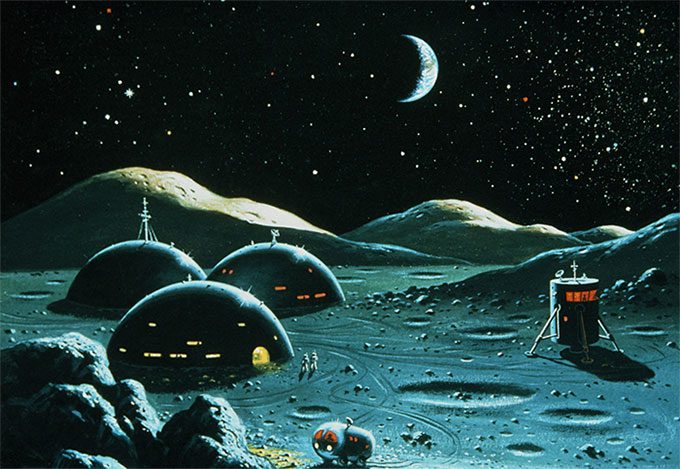Scientists believe that it may be possible to “melt” lunar dust to create solid pathways during the construction of human bases on Earth’s natural satellite.
The Moon lacks air and water, with temperature differences reaching up to 250 degrees Celsius; daytime temperatures near the equator can soar to 120 degrees Celsius, while nighttime temperatures can drop to -130 degrees Celsius.
However, the greatest challenge to date for space agencies pursuing the dream of building a lunar base is dirt.

Simulation of a lunar base.
Lunar dust infiltrates and corrodes astronaut suits, clogs machinery, coats scientific research tools, and even complicates the movements of astronauts.
Now, scientists propose a potential solution, demonstrating that lunar dust can also be melted by a giant lens to transform into a special “asphalt” under the conditions of this celestial body.
“You might think: Roads on the Moon? Who would use them?” the Guardian reported on October 13, quoting co-author Professor Jens Günster from the Institute for Materials Research and Testing in Berlin, Germany.
According to him, in reality, roads are an urgent need from the outset. “If the materials are extremely loose, under conditions without air, gravity, the dust will scatter everywhere. Dust not only contaminates your devices but also infiltrates those of neighboring countries. No one is pleased to be covered in dust from another country’s rocket.” the professor stated.
Dust has also been a concern during previous lunar missions, as seen when the Surveyor 3 lander was damaged by dust stirred up from the Apollo 12 spacecraft landing.
Therefore, the National Aeronautics and Space Administration (NASA) aims to overcome this challenge and sees it as a priority to address while progressing towards establishing a permanent outpost on the Moon.
Professor Günster and his colleagues experimented with a solution using a material called EAC-1A, a product of the European Space Agency (ESA), to simulate lunar dust.
They employed a 50 mm diameter laser beam to melt the material at a temperature of 1,600 degrees Celsius. Under this thermal pressure, EAC-1A particles bond together and form triangular materials with edges, measuring 25 cm across.
These material fragments can link together to create solid surfaces, extending across the lunar surface, allowing for the construction of roads and landing pads for spacecraft.


















































